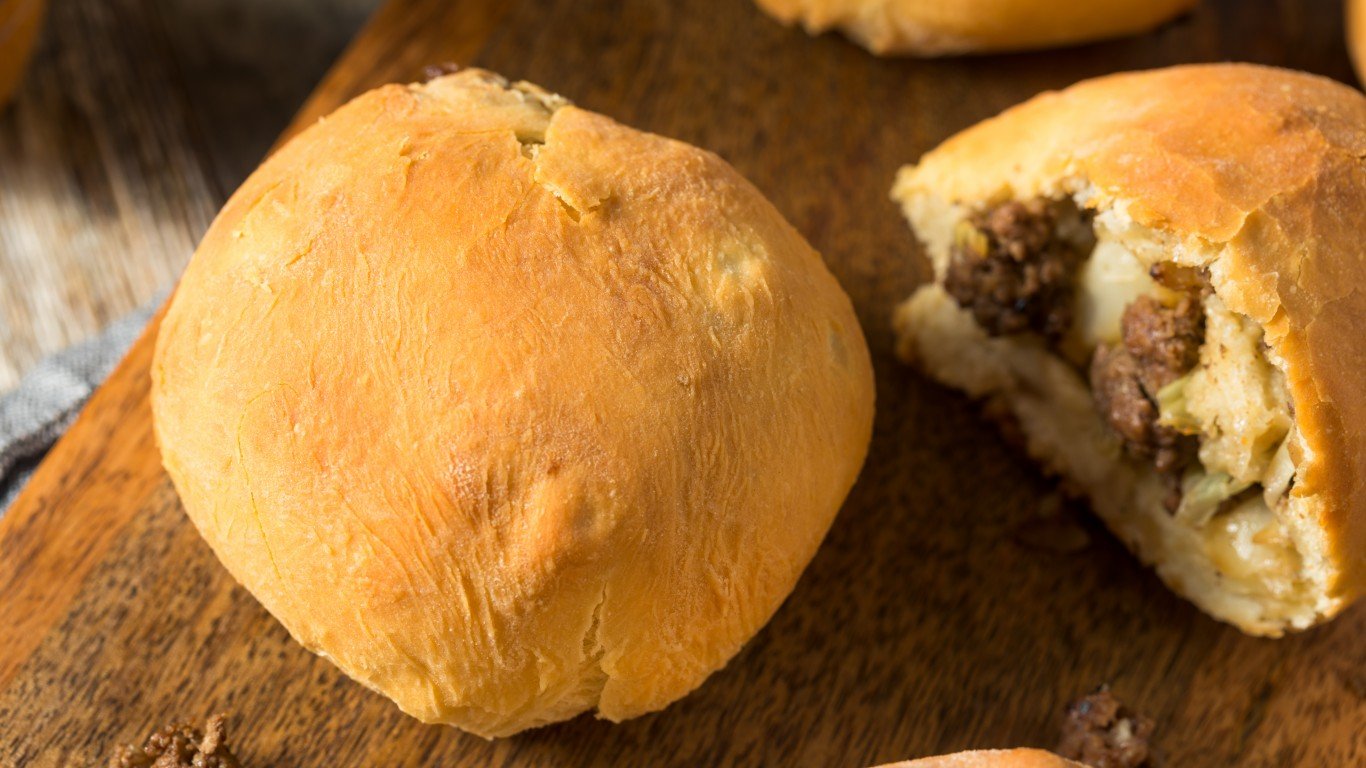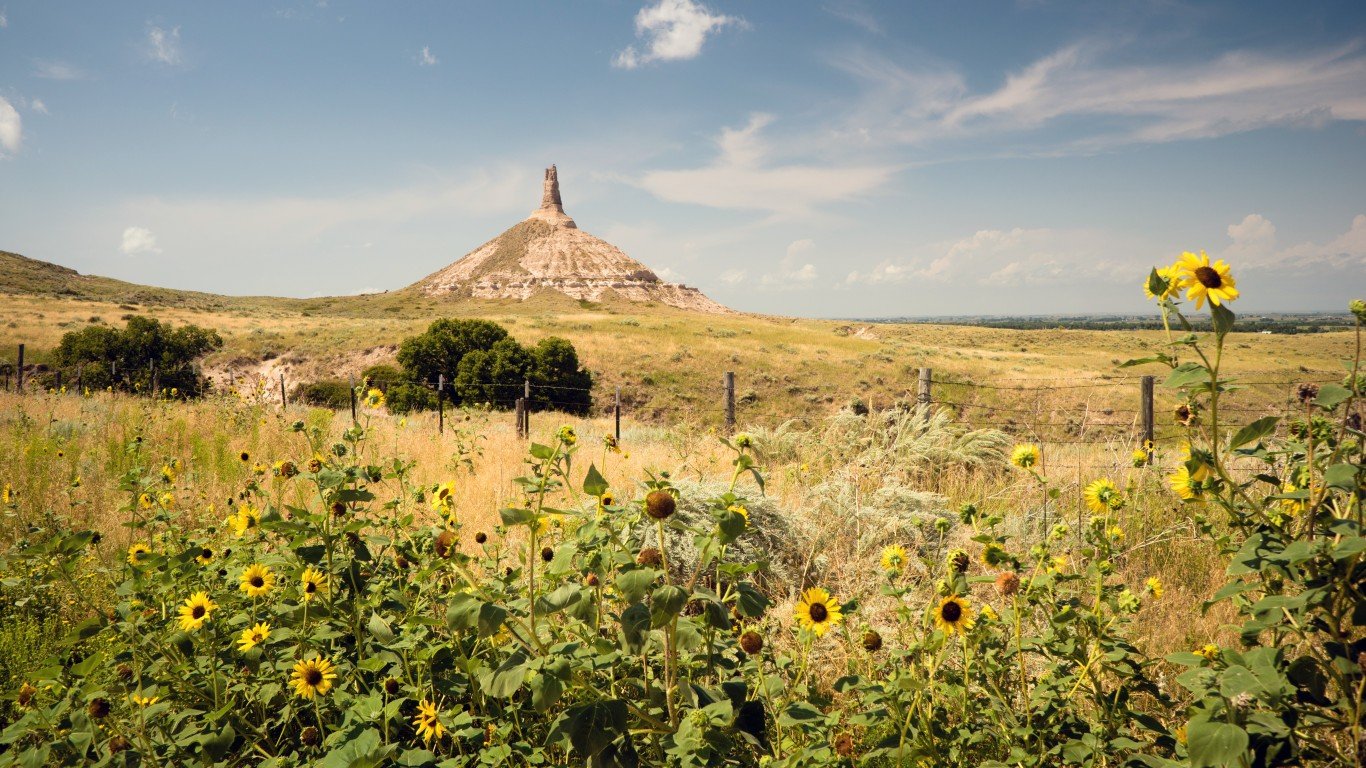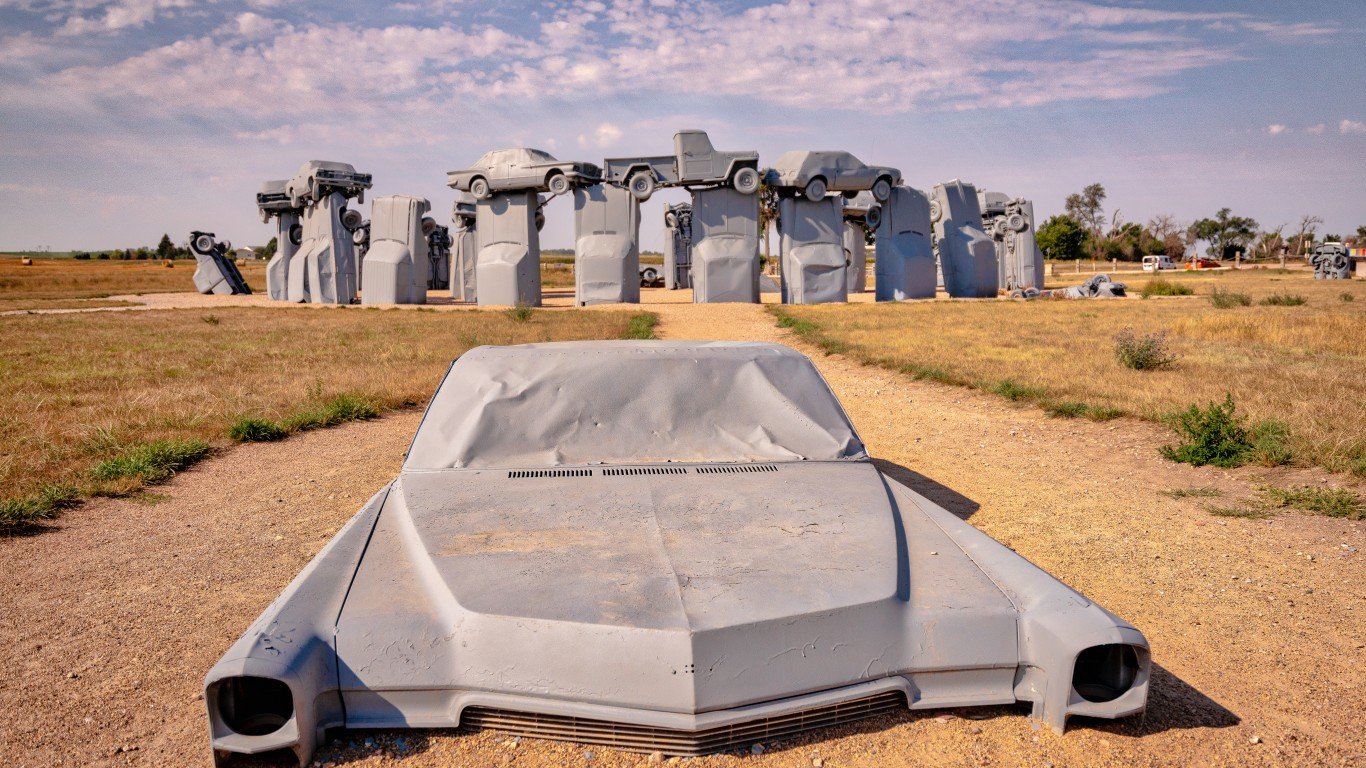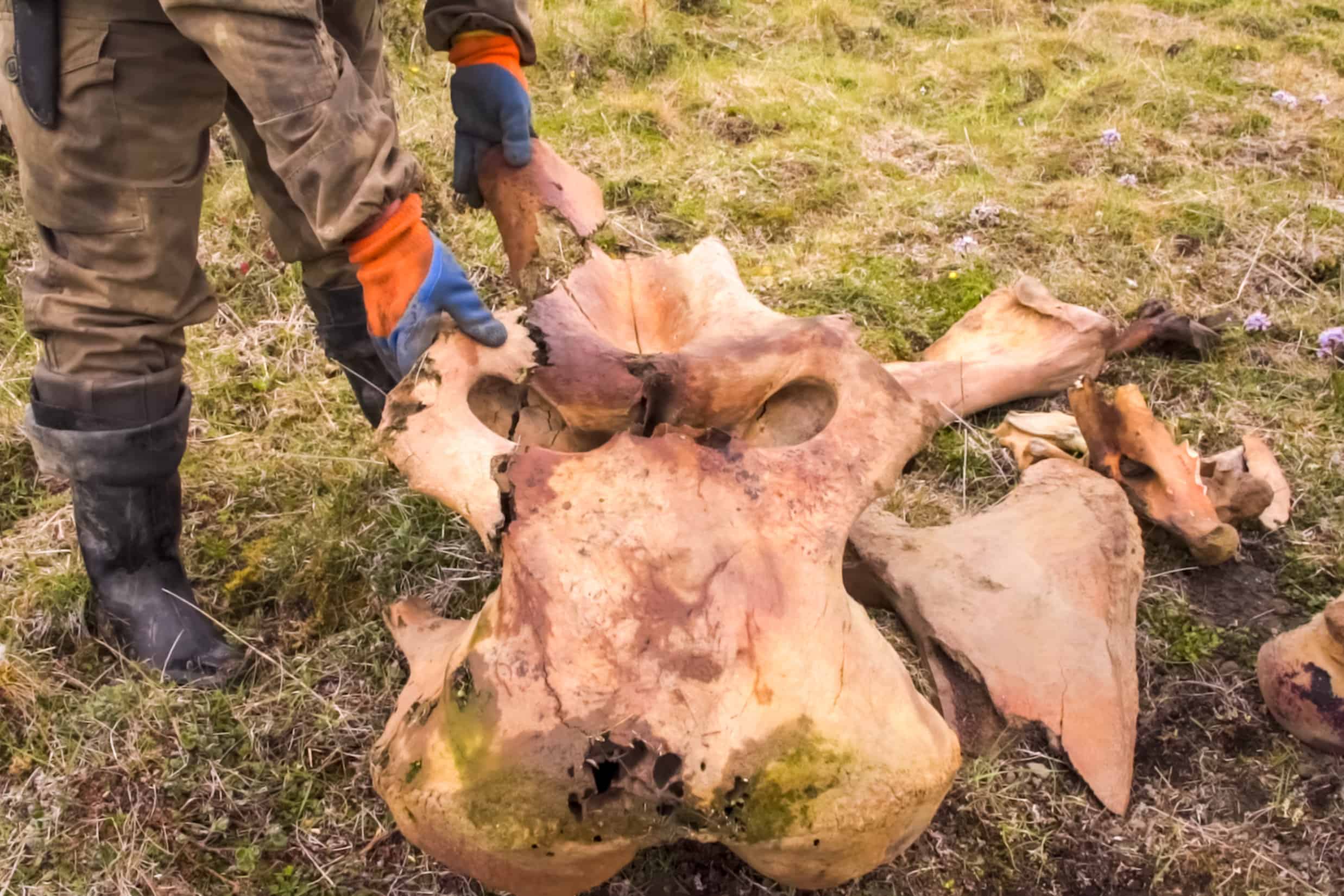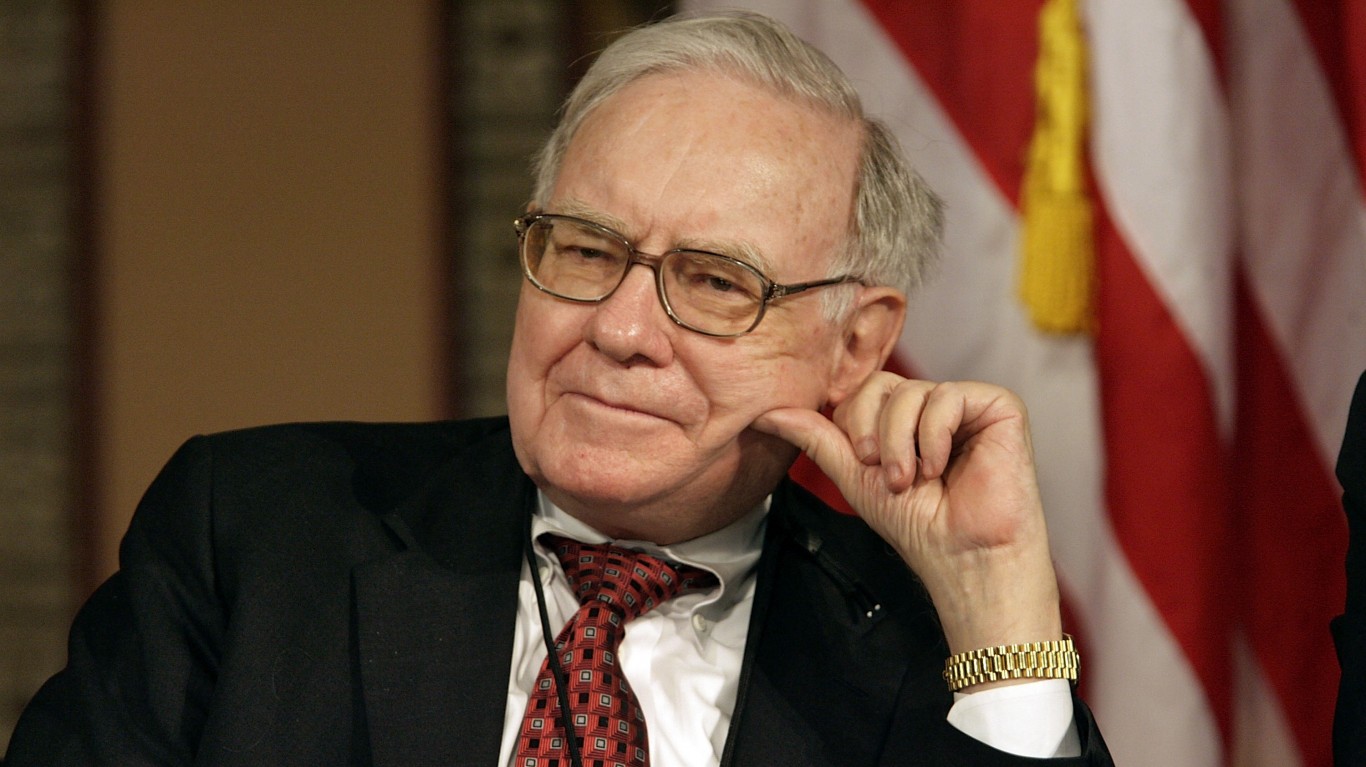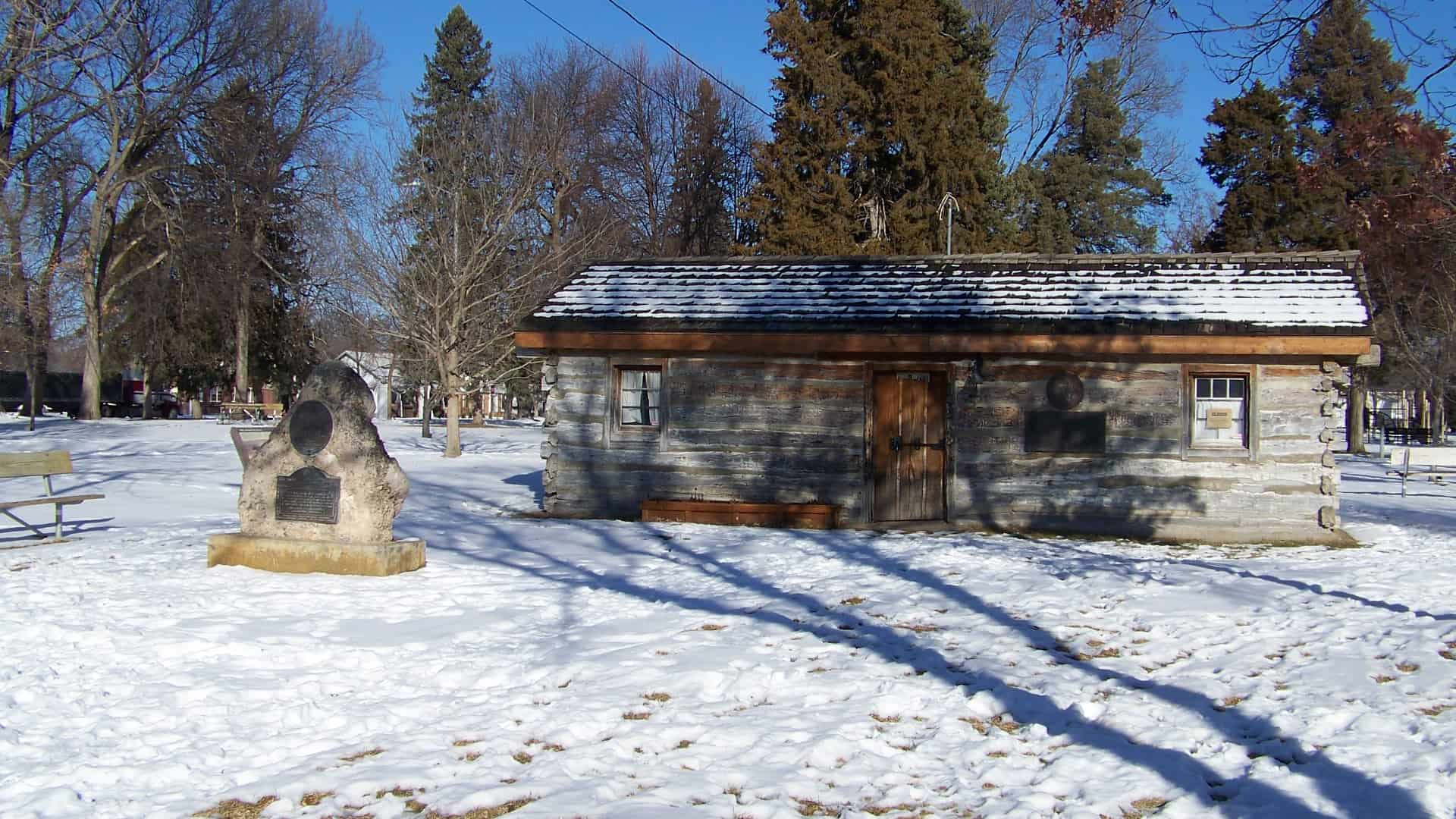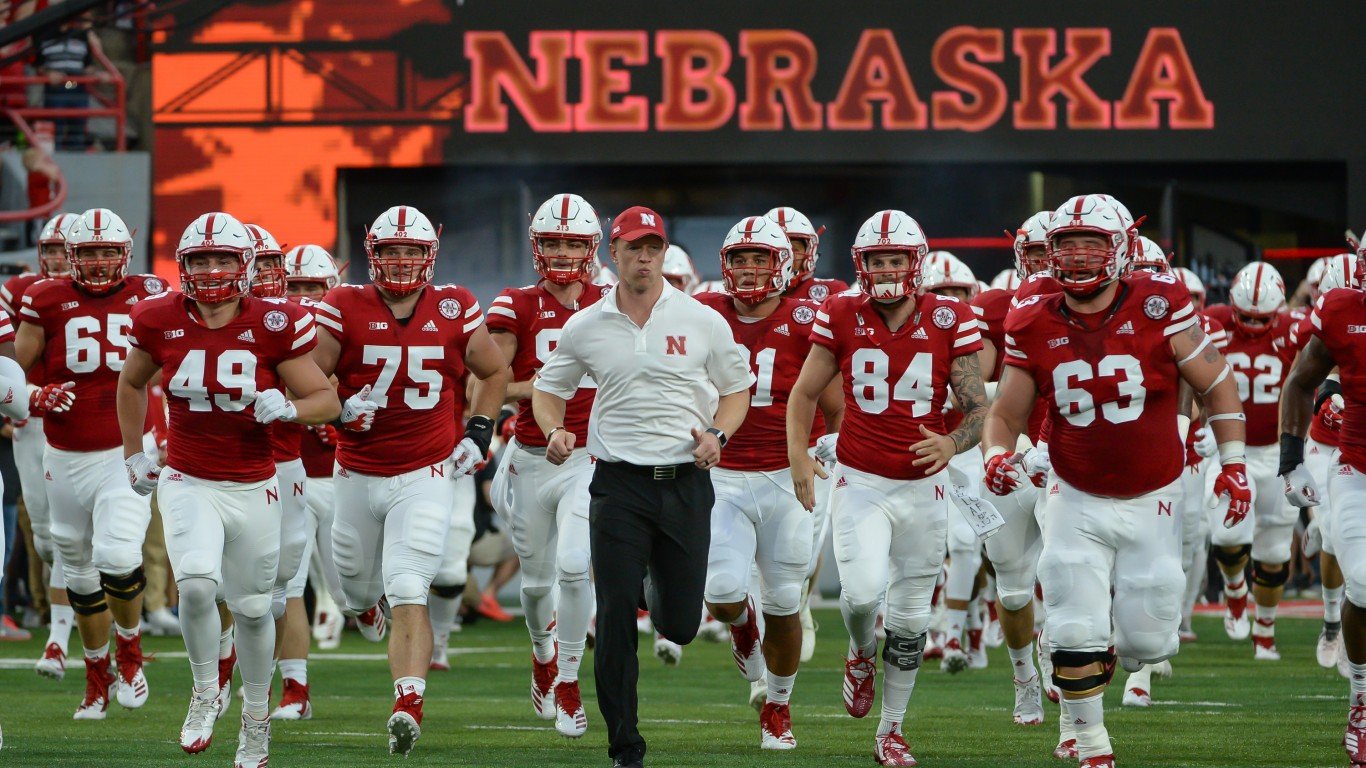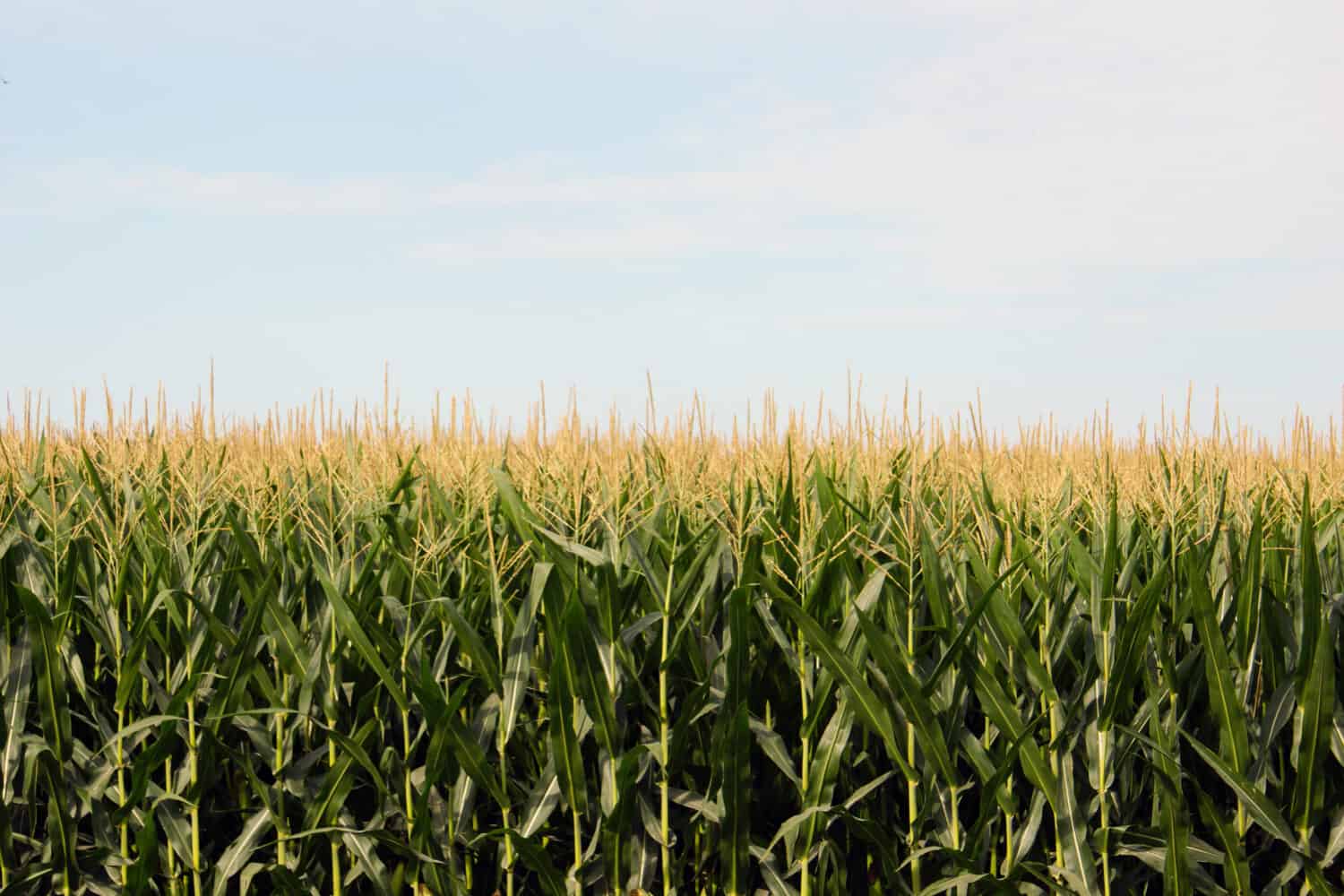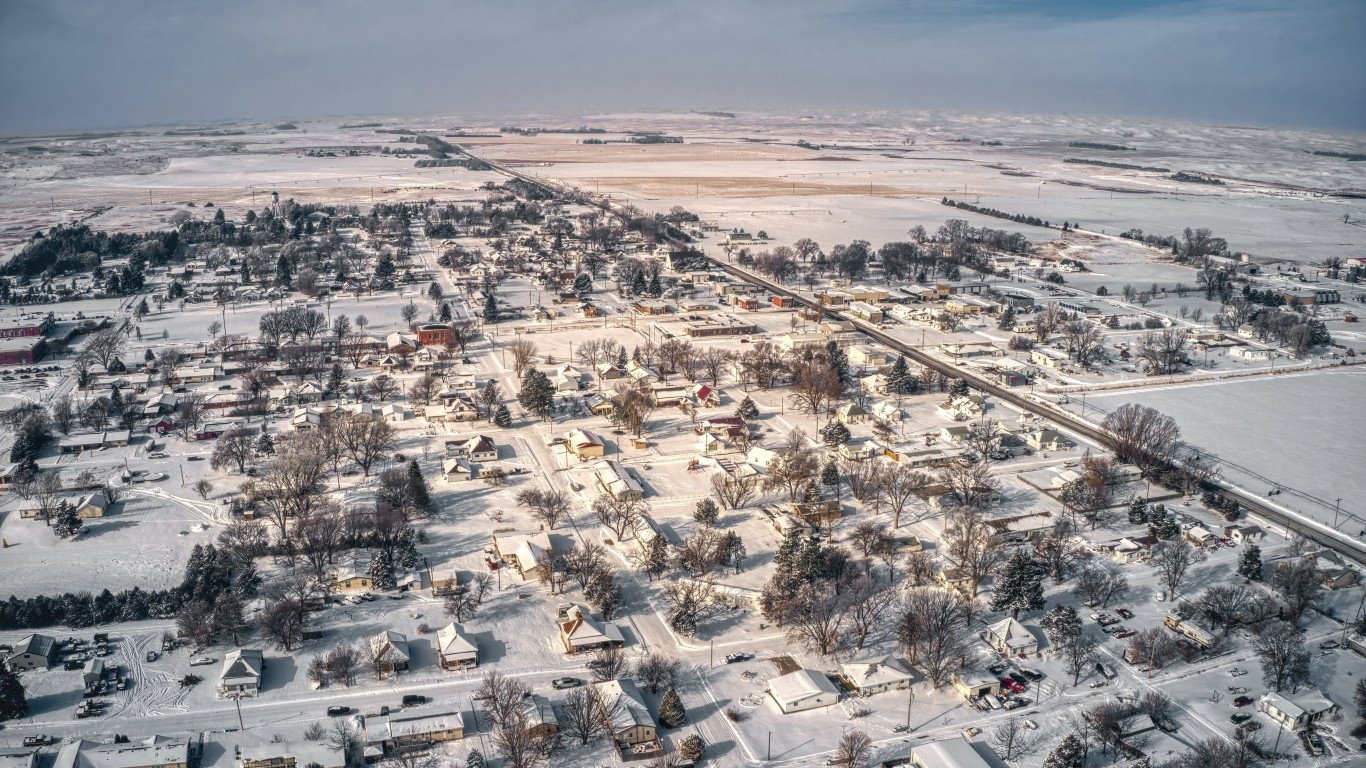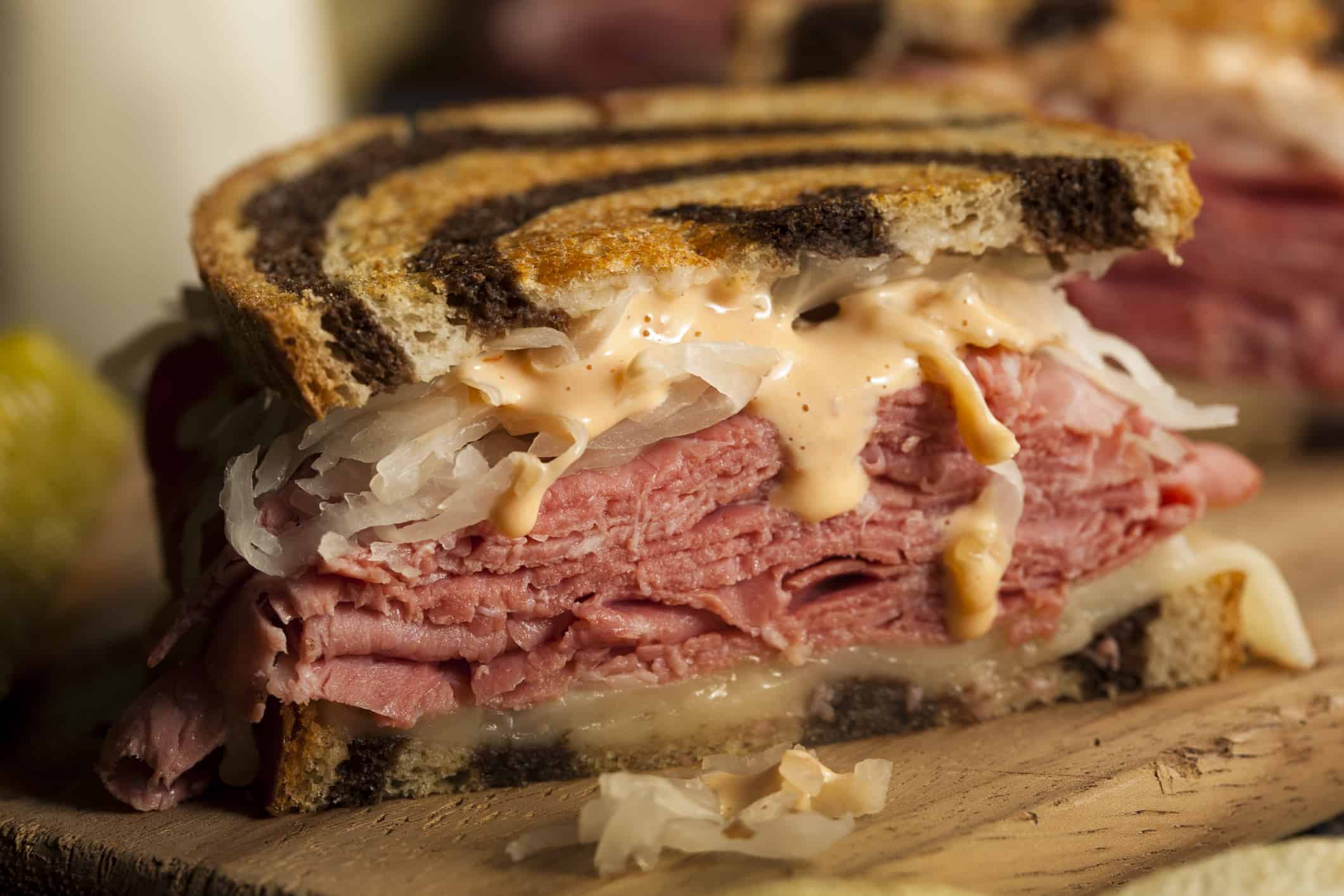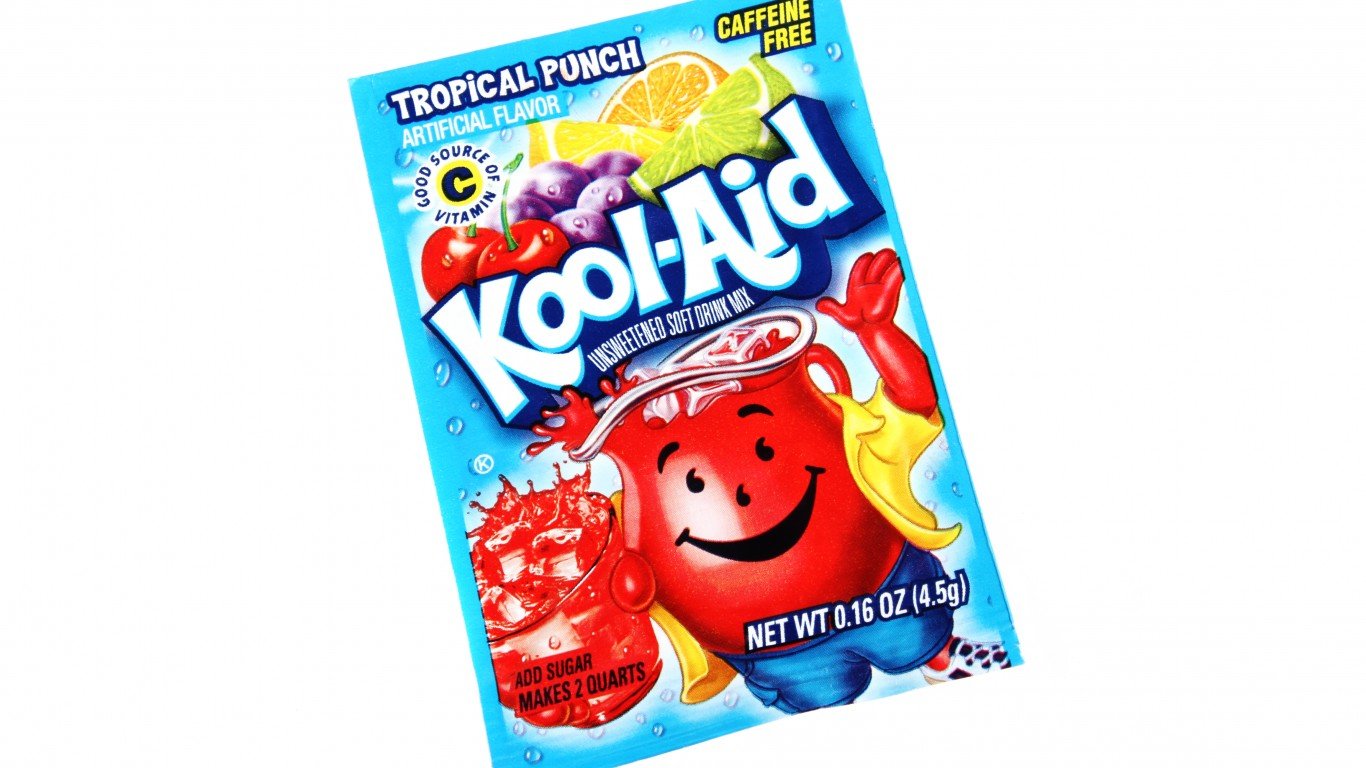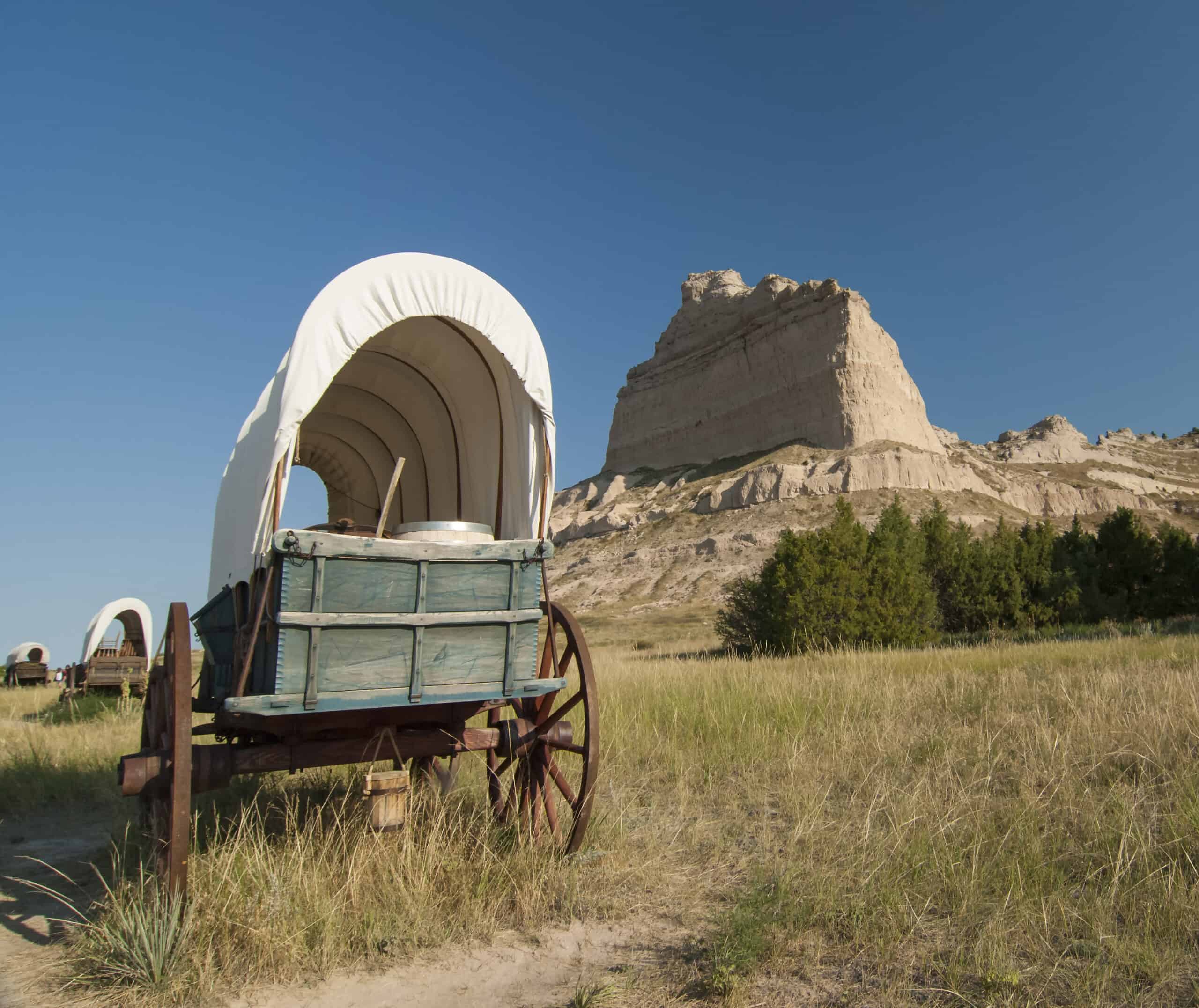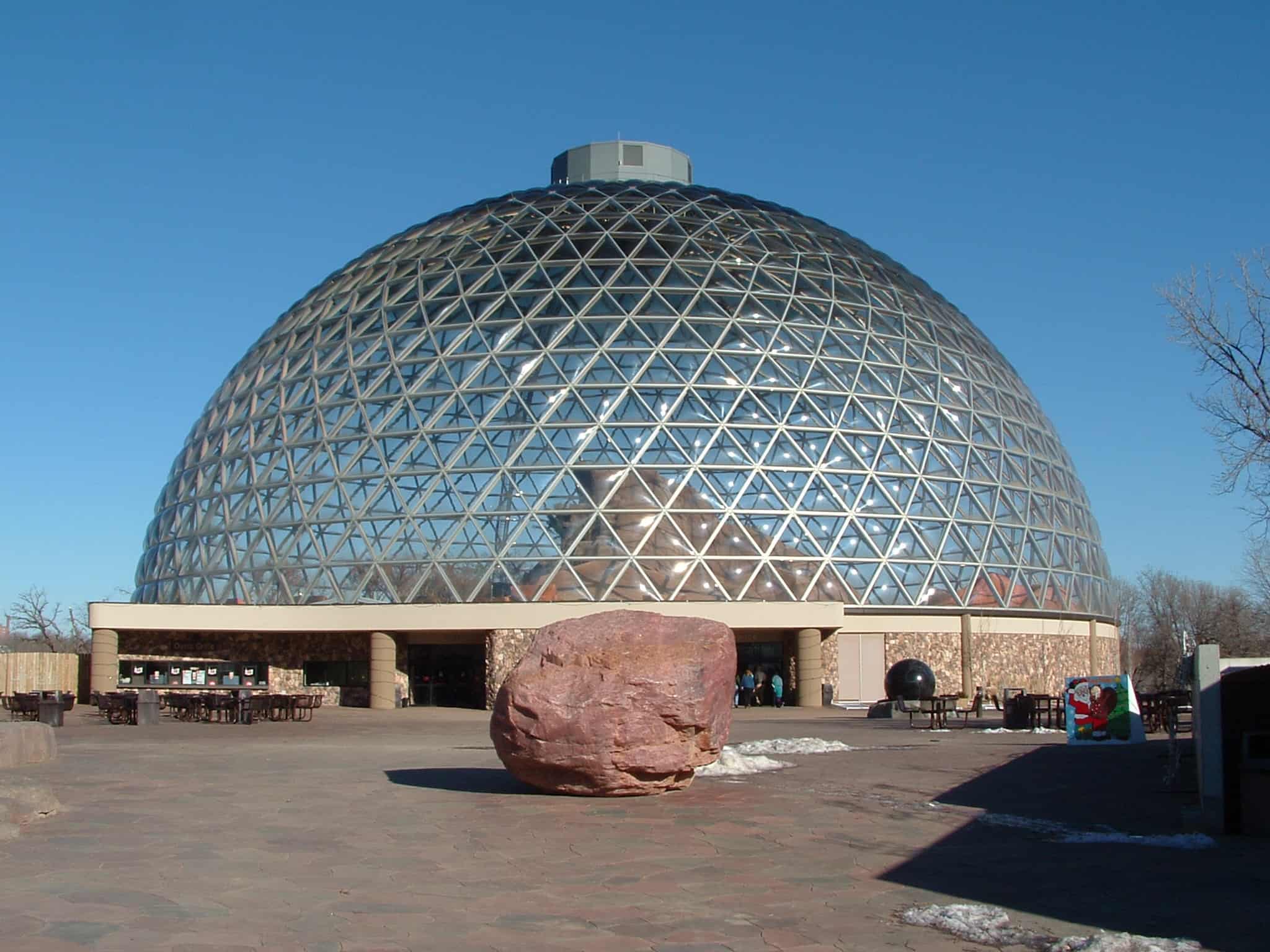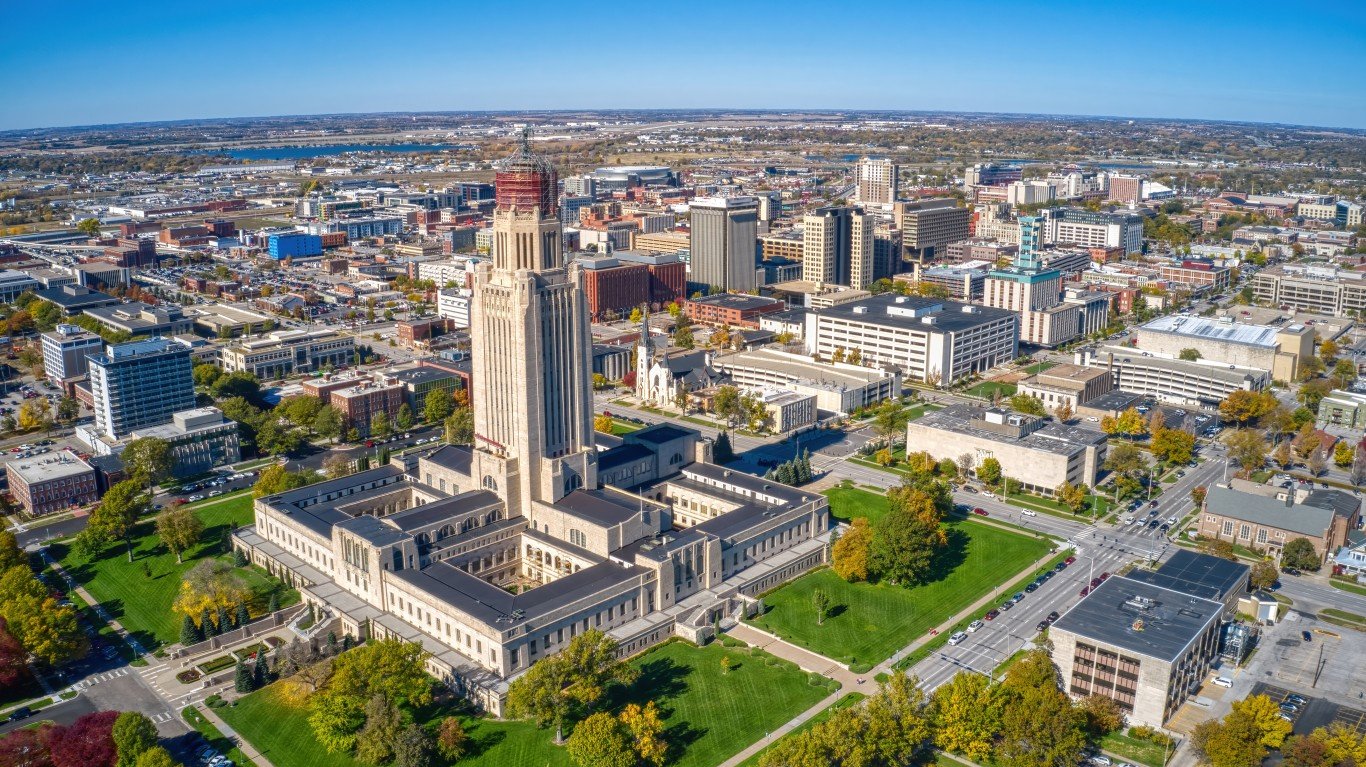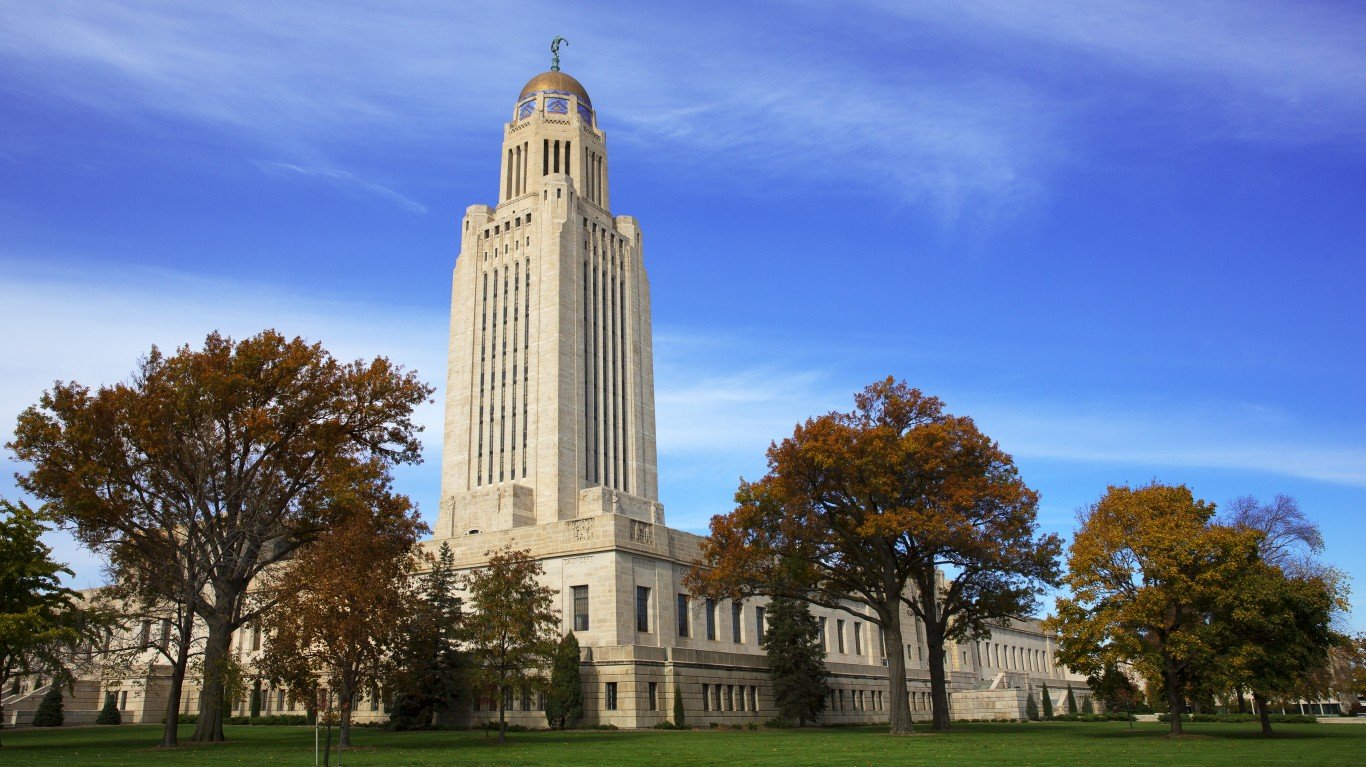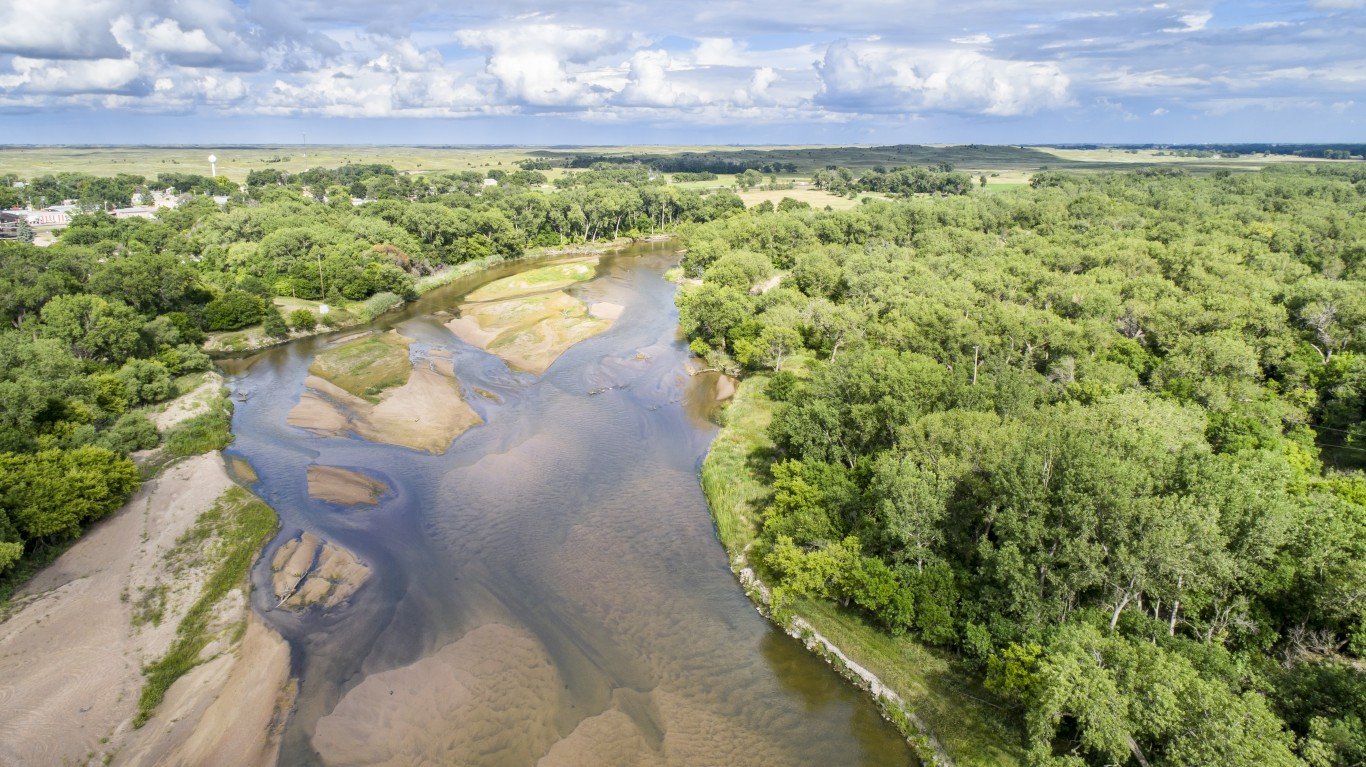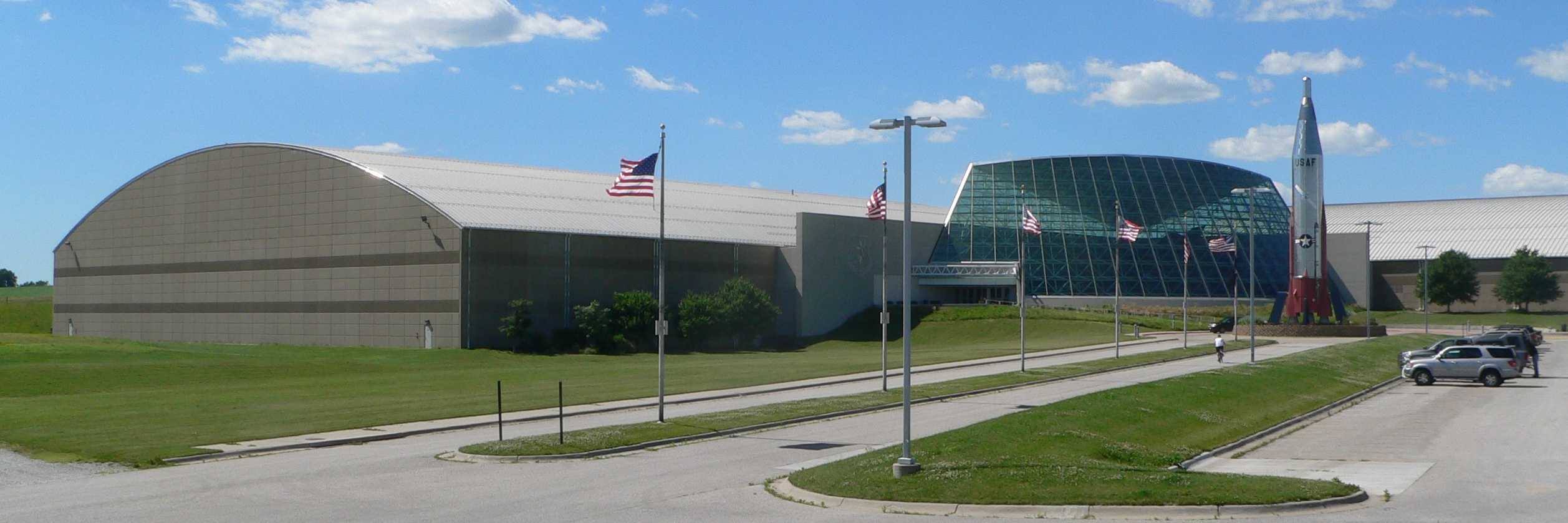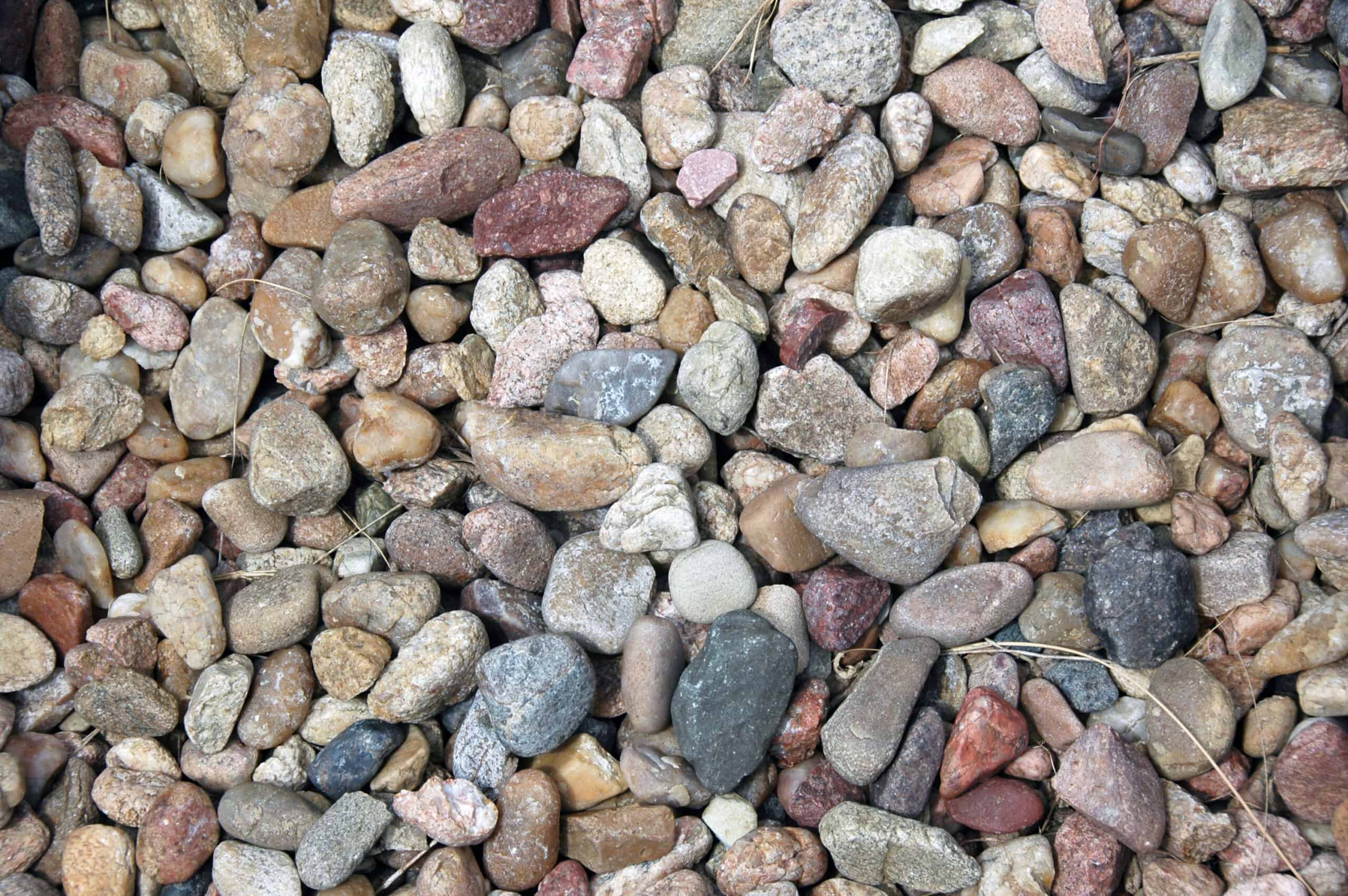Author: Kristina Larson
Source
There is no place like Nebraska! This song, performed by the University of Nebraska-Lincoln marching band, is a testament to the “Cornhusker State.” From agriculture to pioneer history, museums, and popular foods, Nebraska is known for its rich history and friendly people.
As the 37th state in the union, Nebraska entered statehood on March 1, 1867. However, the state was home to many Native Americans before the first European settlers arrived. In fact, Nebraska is an Otoe Indian word meaning “flat water.” This is in reference to the Platte River, one of the state’s many unique waterways.
But what else is Nebraska known for? Here are 20 fascinating things you should know about the Cornhusker State.
1. Arbor Day
While Arbor Day may now be recognized nationwide, the holiday began in Nebraska. A Nebraska City resident, J. Sterling Morton, recognized the state’s need for trees on its open plains. Not only did trees bring fruit, shade, and lumber for building materials, but they also provided a windbreak to keep the soil from blowing away. Morton used his passion and advocacy for trees to create the first Arbor Day, set for April 10, 1872. Additionally, according to the Arbor Day Foundation, an estimated 1 million trees were planted on the first holiday.
Since its humble beginnings, Arbor Day is now celebrated on the first Friday of April each year in all 50 states. This holiday is known for its mission to provide a greener earth.
2. Runza
Nebraska is home to one fast food chain you likely won’t find anywhere else: Runza. The restaurant’s name hails from a food item by the same name that was popular in the state. A runza includes seasoned ground beef and cabbage wrapped up in dough and then baked. The first Runza restaurant was opened in Lincoln in 1949 and was famous for serving this food item that couldn’t be found at any other fast food restaurant. It’s now grown to be the most popular fast-food chain in the state.
Today, you can find over 80 locations of this franchise. You can also find runza sandwiches served at popular sporting events.
3. Chimney Rock
If you’ve ever ventured across Western Nebraska, you’ve likely seen the state’s most popular landmark: Chimney Rock. This formation stands 470 feet tall, with the tip rising about 325 feet above the base. Additionally, Chimney Rock stood as a popular landmark for travelers across the state in the early years. For some, it meant they were on the right path to the Missouri River. For others, it marked the end of the plains and the beginning of the mountainous terrain.
In 1941, the land surrounding Chimney Rock was deeded to the Nebraska State Historical Society. Soon after, the federal government marked this land formation as a National Historic Site.
4. Carhenge
Unique only to Nebraska, Carhenge is an artistic take on Europe’s Stonehenge. This monument, made entirely of automobiles (39 to be exact), is located near Alliance, Nebraska, and was constructed in 1987. The land owner and artist, Jim Reinders, designed the structure and used the help of family members to construct the art piece.
Today, Carhenge has been seen in many Hollywood movies and sees travelers from around the world. According to Carhenge.com, this monument was also given a Travelers’ Choice award from Tripadvisor in 2022.
5. Largest Mammoth Fossil
The largest mammoth fossil in the world is located inside Lincoln, Nebraska’s Morrill Hall on the UNL campus. This museum, also known as Elephant Hall, is home to “Archie,” a 14-foot-tall Columbian mammoth. This fossil has been on display in Lincon after being discovered by a Nebraskan farmer, Henry Kariger, in 1921.
A bronze life-sized statue stands outside Morrill Hall today to commemorate the fossil. It’s an iconic and well-known structure to generations of University students.
6. Warren Buffet
Known primarily as the CEO and chair of Berkshire Hathaway, Warren Buffet hails Nebraska as his home. In fact, Buffet was born in Omaha and still calls this city home. He is also popular for living in the same home he purchased in 1958, according to CNBC.
While Buffett is known as one of the century’s top philanthropists and business advisors, he humbly calls Nebraska home.
7. The Pony Express Trail
One of the things Nebraska is known for historically is being part of the Oregon Trail that brought travelers west in the mid-1800s. Due to the expansion, the country had to find a new way to move mail from the East to the West. Hence, the Pony Express was created. Today, you can view and even travel part of the original trail as it flows through the state.
The trail hits several different parts of Nebraska and was specifically marked by the Great Platte River Road Archway Monument over Interstate 80 in Kearney, Nebraska.
8. The Cornhuskers
If Nebraskans enjoy one thing more than their Runza’s, it’s their beloved college football team, the Cornhuskers. Often shortened to just “Huskers,” the football team is recognized and celebrated statewide. Additionally, home games are played in Memorial Stadium, which is located in Lincoln. On game day, the sold-out crowd of about 90,000 participants makes up the state’s third-largest city in population.
9. Agriculture
As a highly agriculturally focused state, Nebraska is known for producing corn and beef. In fact, the Nebraska Department of Agriculture reports that in 2021, the top leading commodities were cattle and calves, followed by corn. Corn makes up a large part of the state’s economy, too. According to the National Corn Board, the state yielded over 1.4 billion bushels of the corp in 2022 alone.
From these numbers, you can see how the state received its nickname of the “Cornhusker State.”
10. The Sandhills
While Eastern Nebraska is known for its crop production and rolling plains, the western part of the state has a different look. 19,300 square miles of sand dunes that stretch over 265 miles make up the Sandhills of Nebraska. This is truly a site to see, with some dunes standing over 400 feet tall! Additionally, the Sandhills are known as the largest sand dune formations in the Western Hemisphere.
Much of the sand that used to blow freely has now been vegetated. This leaves room for agriculture as the Sandhills are home to ranchland today.
11. The Rueben
While the exact origin of the Rueben sandwich is up for debate, many sources point to its original creation happening in Omaha, Nebraska. Rumor has it that a local grocery store owner, Reuben Kulafofsky, dreamed up the sandwich during his weekly poker games at the Blackstone Hotel in 1925. Another poker player was the hotel owner, Charles Schimmel, who enjoyed the sandwich so much that he added it to the hotel restaurant’s menu.
Unique for its combination of corned beef and sauerkraut, the Rueben is considered the most iconic food in the state.
12. Omaha
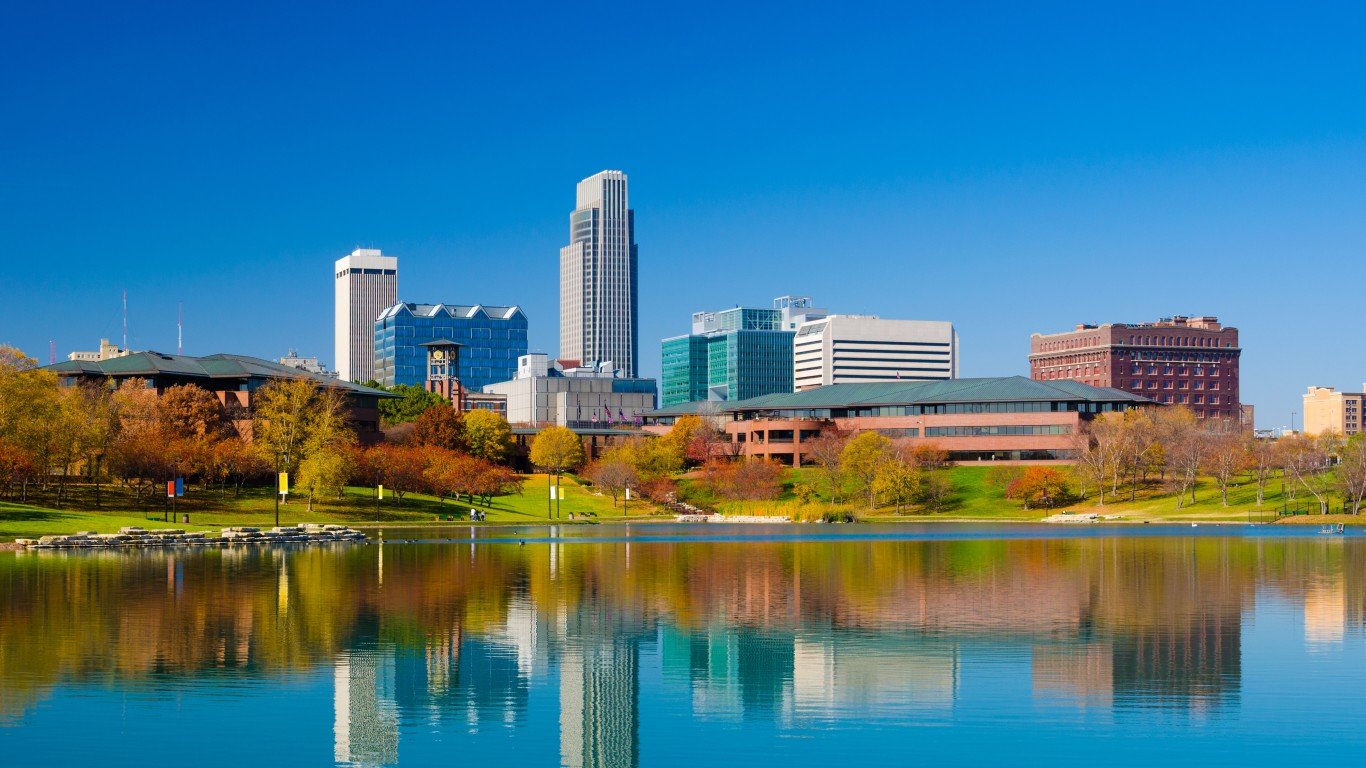 Omaha downtown skyline during Autumn, with a lake at the Heartland of America Park in the foreground
Omaha downtown skyline during Autumn, with a lake at the Heartland of America Park in the foreground
Omaha, Nebraska’s largest and most populated city, is located along the Missouri River. With a rich history, Omaha is named after the Native American tribe with the same name and was established in 1854. Likely leading to its growth was the Union Pacific Railroad eastern terminal set up in the late 1800s.
While the city has continued to flourish over the years, it’s now known for its cultural and arts scene. Additionally, the Omaha World-Herald reports that in 2021, about 12.8 million visitors came to experience this Nebraskan city.
13. Kool-Aid
Another popular food item that calls Nebraska home is Kool-Aid. Invented in 1927 as a powered substance to add to water, Kool-Aid (originally called Kool-Ade) was invented by Edwin Perkins in Hastings, Nebraska. Known originally for its inexpensive price (just 5 cents a packet during The Great Depression!), this drink additive grew quickly in popularity. In fact, in only a few short years, Hastings outgrew the production of the product, and operations were moved to Chicago.
Even though Perkins sold Kool-Aid to General Foods in the early 1950s, he always considered Hastings home.
14. Scotts Bluff
Like Chimney Rock, Scotts Bluff is an iconic landmark in Western Nebraska. Now called the Scotts Bluff National Monument, Britannica reports that it was originally named after a fur company clerk named Hiram Scott, who passed near the land formation in 1828.
The bluff itself stands over 800 feet above the North Platte River that flows nearby. It was also used as a landmark for those traveling westward. Today, Nebraska’s 13th largest city, which goes by the same name, Scottsbluff, is just a few miles away from the monument.
15. Henry Doorly Zoo
Covering more than 130 acres of land in the middle of Omaha is the Henry Doorly Zoo. While the zoo was originally established as a park in 1894, it grew over the years to require extra help. The Omaha Zoological Society was created in 1952 to manage the zoo, and its name comes from a large donation made in 1963 by Margaret Hitchcock Doorly.
Today, the Henry Doorly Zoo is known as one of the best zoos in the nation. It’s also home to the Lied Ungle, the country’s largest indoor rainforest.
16. Lincoln
The second most populous city in the state is Lincoln. Interestingly, this city received its name from our country’s 16th president, Abraham Lincoln, often seen as one of the most effective presidents.
The city of Lincoln is also home to the state capital, the state’s largest university, and, of course, the beloved Cornhuskers. The city was originally founded in 1859, and historians believe it became the capital after many saw it for its potential in the salt industry. While the city’s participation in the salt industry never came to fruition, Lincoln became the capital after it was seen as a more centralized location, rather than Omaha, which was seen as too far east.
If you happen to stop by Lincoln today, check out the city’s many museums and downtown vibes in both the Railyard and Haymarket districts.
17. Unicamerial Legislature
While Lincoln stands as the state capital, the legislature inside the capital building is unique to the state. Nebraska is the only state with a unicameral legislature, meaning it only has one house. All other states in the country have a two-house legislature, and while many have been interested in unicameralism, Nebraska stands as the only state in the nation to use this form of legislature.
18. Rivers
Despite being landlocked, Nebraska is home to over 100,000 miles of rivers and streams. Most famously, the city’s eastern edge borders the Missouri River, making Omaha a large industrial city. Additionally, as mentioned, the state was named after the Platte River, a wide yet shallow river that has two arms meeting iconically in the city of North Platte. Other large and popular rivers in the state include the Loup River, the Elkhorn River, and the Niobrara River.
19. Strategic Air Command and Aerospace Museum
Many don’t know that at one time in history, Nebraska was home to the Strategic Air Command (SAC), formed in 1946 as a combat command for the U.S. Air Force. While SAC is no longer in operation, a museum was created in 1996 to preserve the history of it.
Today, the SAC Air Museum covers over 300,000 square feet and is known for its incredible exhibits and rich history of both the Cold War and military aviation. It’s also unique in that the museum is one of only 3 in the country to have its own restoration hangar.
20. Ash Falls Fossil Beds
As a museum owned by the University of Nebraska, Ashfall Fossil Beds is a unique stop in Royal. According to the Smithsonian Magazine, Nebraska was once a subtropical jungle. The area is now covered with fossils buried under volcanic ash from millions of years ago. Mike Voorhies discovered some 200 skeletons of rhinos, alligators, and large fish in the area in the late 1970s.
Today, the museum has some of these fossils on display, allowing visitors to watch scientists continue to study and unearth these fossils.
Financial Experts Agree – The Right Credit Card Makes All The Difference (sponsored)
Financial experts like Suze Orman and Dave Ramsey agree: choosing the right credit card is more important than ever. Whether you’re trying to get out of debt, save for retirement, or travel the world – there is a card that can help you acheive your dreams.
Use the card match tool below, or click here now, to find your financial freedom!
The post 20 Things Nebraska is Known For appeared first on 24/7 Wall St..

